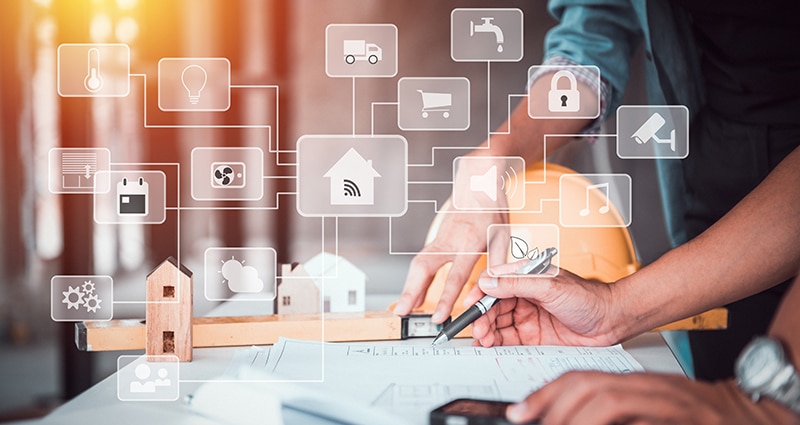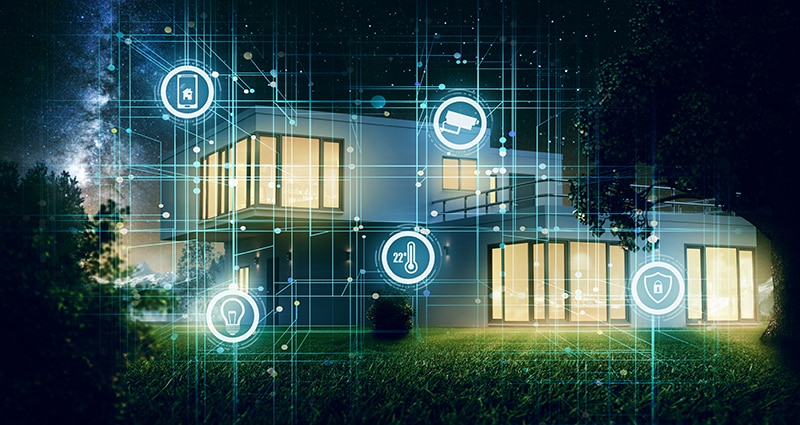Redefining Speed and Facilitating Transformation in Urban Mobility
5G and 6G will assist in delivering smarter communication between city infrastructure and transportation
This is a summary of an article from a five-part series about the technologies that enable IoT. The full article can be viewed at wevolver.com.
Introduction
The transformative potential of IoT is being felt across all sectors, however, a leading benefactor is The Smart City. Within the rapidly expanding understanding of the smart city as a connected and interconnected network of smart objects - transportation and mobility are key to reaching the smart city's goals of sustainability, efficiency, and safety. The expected advances in transportation and related systems depend on the high-speed, low latency data transfer offered by 5 and 6G.

5G: The Connectivity Revolution
Unlike 4G and the previous generations of mobile standards that were designed for a mobile-first world, 5G is designed to meet the needs of a world beyond mobile, with features that enable the connection of devices, objects, machines, mission-critical systems - essentially anything that benefits from communicating.
Based on orthogonal frequency-division multiplexing (OFDM), 5G operates on similar mobile networking principles as 4G LTE, but it leverages a new 5G NR air interface to enhance the OFDM modulation further to attain a higher degree of flexibility and scalability. This capacity, combined with 5G’s usage of wider bandwidths, including the sub-6 GHz and mmWave bands, affords it multi-Gbps throughput (about 10 to 100 times faster than LTE), low latency (about 1 ms), and broader application areas.
5G’s speed, robustness, and ability to enable massive Machine Type Communications (mMTC) increases the potential and impact of transformative technologies like IoT, AI, Augmented Reality (AR), and Virtual Reality (VR).
6G: Beyond 5G
6G is not an official standard yet and is still in its early research phase. However, its final form will outweigh the current 5G offer and meet the demands of the next generation of IoT with improvements in speed, coverage, network optimization, and power.
For speed, 6G is expected to leverage the use of extremely high and diverse frequencies, along with radios featuring advanced technologies to deliver data speeds expected to be in the range of 100x the current 20 Gbps theoretical speed available with 5G. For coverage, satellite technologies are currently being explored for 6G deployment. The success of this could lead to 6G becoming universal with fewer deployment hassles compared to what is being experienced with 5G and reliable connectivity for even the most remote of locations across the world. With the growing need for power efficiency in devices and power consumption being a major constraint for 5G, it only makes sense that 6G is designed with reduced power consumption in mind.
5G/6G and Mobility
The increased data speed, reduced latency, and other features of these new communication standards are transforming and unlocking new possibilities within the mobility sector including:
1. In-Vehicle Connectivity-based solutions
2. V2X
3. Connected and Autonomous Vehicles
Enabling smarter urban transportation infrastructure
The better connectivity and low latency provided by 5G has a significant impact on public and private transportation infrastructure. These will be most felt in urban areas where better public transport solutions will streamline mobility, reduce congestion and improve air quality.
Dynamic transport planning and traffic decongestion
Connected vehicles, bus stops, roads with embedded sensors, traffic cams, etc., will leverage V2V and V2I vehicle-to-everything (Vehicle-to-vehicle and vehicle-to-infrastructure, etc.) communication to make urban mobility more efficient.
Connectivity between the different modes of transportation and infrastructures provided by this system will improve the mobility experience of users by allowing them to easily select a mode of transportation based on near-real-time location and ETA updates provided by connected bus stops/subways etc. Based on crowd insights, the system could also automatically reroute vehicles to routes with more demands, reducing wait time for users, and preventing the revenue and operational inefficiency issues associated with the operation of near-empty or overloaded vehicles.
5G-connected autonomous vehicles will potentially streamline traffic by reducing human error and cars programmed to leave urban areas when not in use. Their existence could also improve ride-sharing which would further reduce the number of cars on the road and ultimately reduce traffic congestion.
All of these features and applications will be working together to prevent traffic buildups, assist with decongestion, and generally provide users with a more efficient and reliable transportation system.
Improved Safety and transparency
In-vehicle connectivity and V2x communication will improve security and safety inside the vehicles and on the road. The ability of vehicles to talk to everything else will improve safety for drivers and other road users from pedestrians to cyclists by increasing alerts and adding emergency braking systems. Vehicles would be able to communicate with one another, alongside sensors placed on roads, signposts, etc., to share information that helps enforce speed limits. Environmental data that affects the journey, such as alerts on bad road conditions, accidents, and other emergencies, will also be shared, allowing vehicles to change routes dynamically and assist other drivers when needed. Features such as automatic real-time reporting to emergency services will mean faster response rates and fewer deaths from accidents. [1]
Summary
The development and deployment of 5G and 6G will spur new connectivity methods for transportation at all scales and deliver safer, more efficient, and more sustainable transport options. Challenges to the innovation that include security, privacy, and government regulation must be addressed by both design engineers and government agencies to ensure the potential of connected transportation is met.
The full version of this article can be viewed at wevolver.com.
References
-
Monserrat JF, Diehl A, Bellas Lamas C, Sultan S. Envisioning 5G-Enabled Transport.
-
Grijpink F, Härlin T, Lung H, Ménard A. Cutting through the 5G hype: Survey shows telcos’ nuanced views.

Have questions or comments? Continue the conversation on TechForum, DigiKey's online community and technical resource.
Visit TechForum







